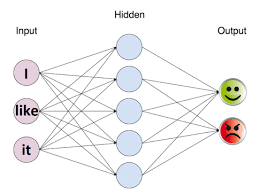Spiking Neural Network: Mimicking the Brain’s Communication System
In the field of artificial intelligence, researchers are constantly seeking inspiration from the human brain to develop more efficient and powerful computing systems. One such innovation that has gained attention in recent years is the spiking neural network (SNN).
Unlike traditional artificial neural networks that rely on continuous firing rates of neurons, SNNs are designed to mimic the way neurons communicate in the brain through discrete spikes or pulses of activity. This biologically inspired approach offers several advantages, including improved energy efficiency, greater parallelism, and enhanced temporal processing capabilities.
One of the key features of SNNs is their ability to process information in a time-dependent manner, where the timing of spikes plays a crucial role in encoding and transmitting data. This spike-based coding allows for more precise and efficient representation of complex patterns and temporal sequences, making SNNs well-suited for tasks such as event recognition, pattern detection, and real-time processing.
Furthermore, SNNs exhibit robustness against noise and variations in input signals, thanks to their asynchronous and event-driven nature. This property enables SNNs to adapt dynamically to changing environments and learn from sparse and noisy data without requiring extensive training datasets.
Researchers are exploring various applications of spiking neural networks across different domains, including robotics, neuroscience research, cognitive computing, and neuromorphic engineering. By harnessing the power of SNNs, scientists aim to develop intelligent systems that can emulate the brain’s remarkable capabilities in perception, learning, and decision-making.
As advancements in neuromorphic hardware continue to accelerate the development of spiking neural networks, we can expect to see more innovative solutions that push the boundaries of artificial intelligence and pave the way for a new era of intelligent computing inspired by nature’s most complex organ – the human brain.
5 Essential Tips for Optimizing Spiking Neural Network Performance
- Understand the basic principles of spiking neural networks before diving into implementation.
- Choose appropriate neuron models and synapse models based on the requirements of your task.
- Consider the network architecture carefully to ensure efficient information processing.
- Fine-tune parameters such as thresholds and weights to optimize network performance.
- Regularly test and validate your spiking neural network model with different datasets.
Understand the basic principles of spiking neural networks before diving into implementation.
Before delving into the implementation of spiking neural networks, it is crucial to have a solid grasp of the basic principles that govern these unique computational models. Understanding the fundamental concepts behind SNNs, such as spike-based communication, temporal processing, and event-driven computation, lays a strong foundation for designing and optimizing neural network architectures effectively. By familiarizing oneself with the underlying principles of spiking neural networks, developers can make informed decisions during the implementation process, leading to more efficient and accurate neural network models that harness the full potential of spike-based information processing.
Choose appropriate neuron models and synapse models based on the requirements of your task.
When working with spiking neural networks, it is essential to carefully select the neuron models and synapse models that best align with the specific requirements of your task. The choice of neuron model determines how individual neurons process incoming signals and generate output spikes, while the synapse model governs the transmission of information between neurons. By choosing appropriate neuron and synapse models tailored to the characteristics of your task, such as computational efficiency, temporal precision, or biological realism, you can optimize the performance and effectiveness of your spiking neural network for achieving desired outcomes.
Consider the network architecture carefully to ensure efficient information processing.
When working with spiking neural networks, it is crucial to carefully consider the network architecture to ensure efficient information processing. The design of the network, including the arrangement of neurons, layers, and connections, plays a significant role in determining the network’s performance and capabilities. By optimizing the architecture based on the specific task or application requirements, researchers can enhance the network’s ability to process information accurately and in a timely manner. This thoughtful approach to network design can ultimately lead to improved efficiency, scalability, and effectiveness of spiking neural networks in various real-world scenarios.
Fine-tune parameters such as thresholds and weights to optimize network performance.
To optimize the performance of a spiking neural network, it is crucial to fine-tune parameters such as thresholds and weights. Adjusting these parameters allows for the network to achieve better accuracy, efficiency, and adaptability in processing information. By carefully optimizing thresholds and weights, researchers and developers can enhance the network’s ability to learn complex patterns, improve its response to input stimuli, and ultimately elevate its overall performance in various applications. Fine-tuning these key parameters is essential for maximizing the potential of spiking neural networks and unlocking their full capabilities in mimicking the brain’s communication system.
Regularly test and validate your spiking neural network model with different datasets.
To ensure the reliability and effectiveness of your spiking neural network model, it is crucial to regularly test and validate it with a diverse range of datasets. By exposing the model to various data sources, you can assess its robustness, generalization capabilities, and performance across different scenarios. Testing with different datasets helps identify potential biases, overfitting issues, or limitations of the model, allowing you to fine-tune and optimize its parameters for improved accuracy and efficiency. Continuous validation with diverse datasets is essential for enhancing the overall quality and reliability of your spiking neural network model.




